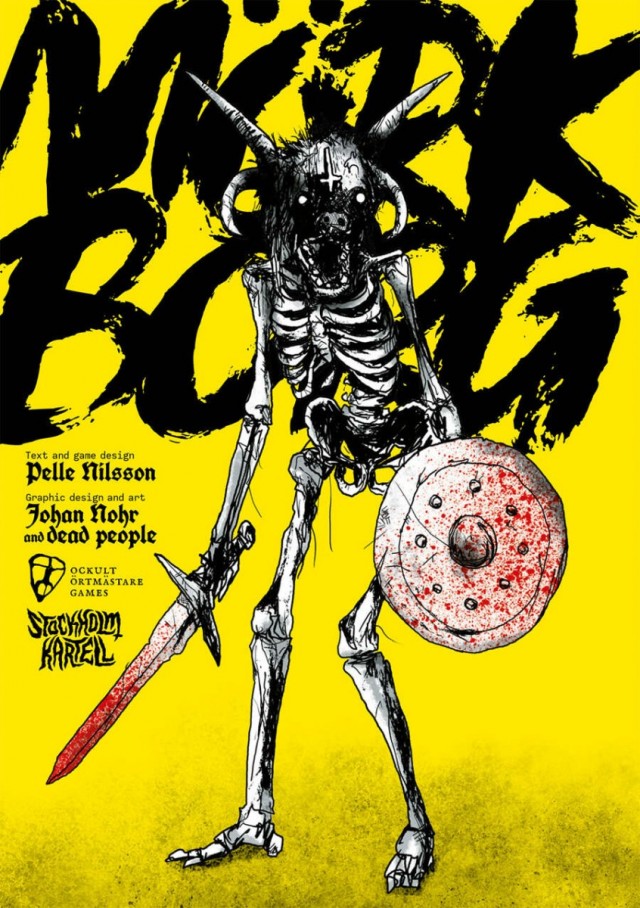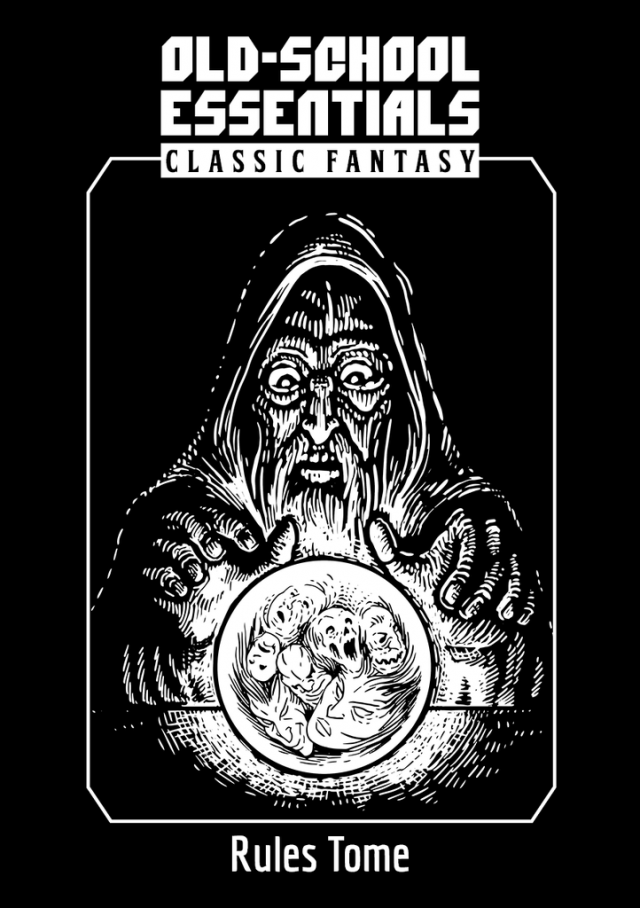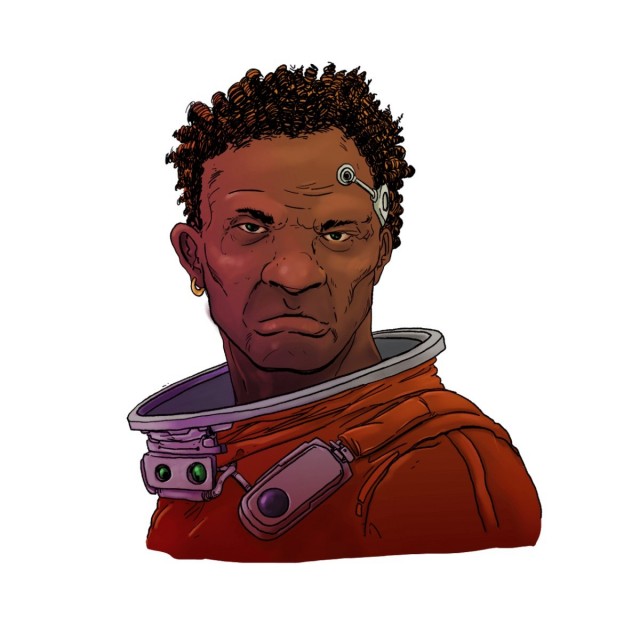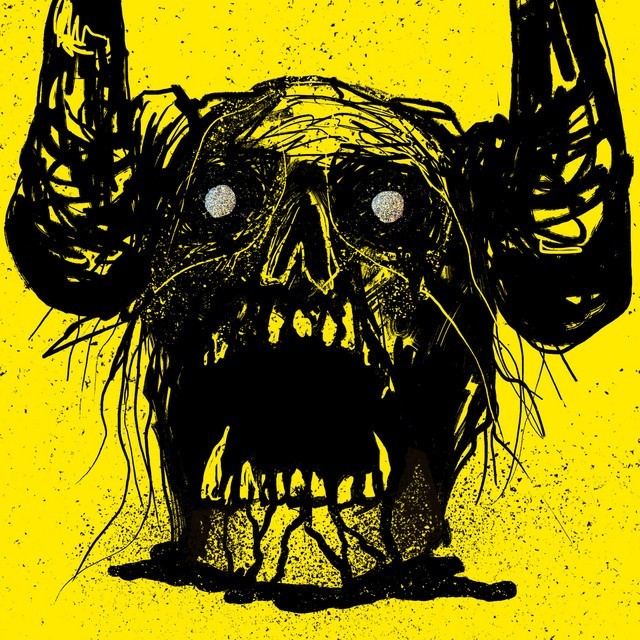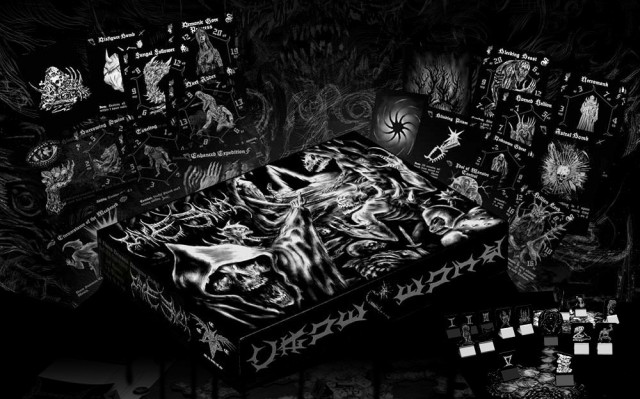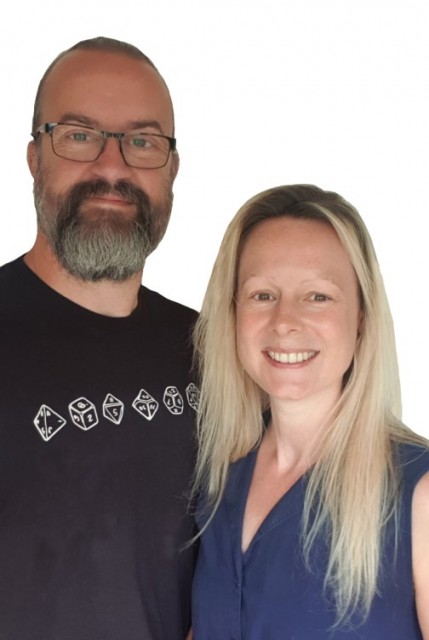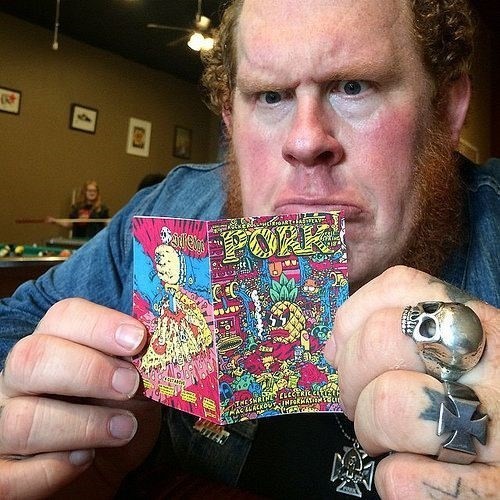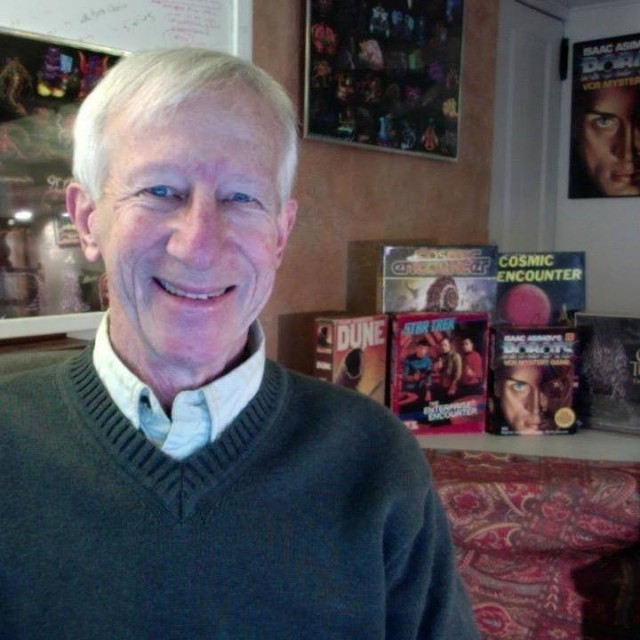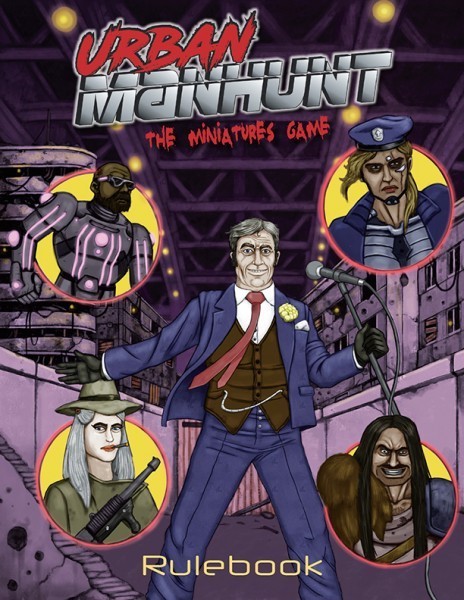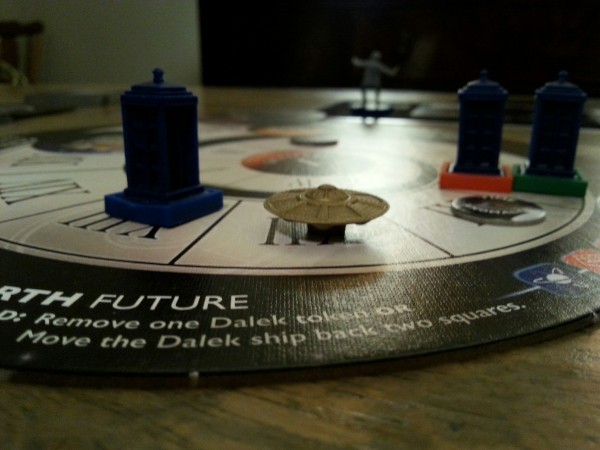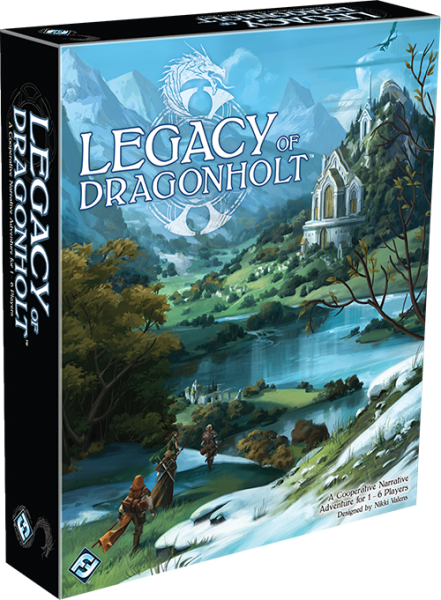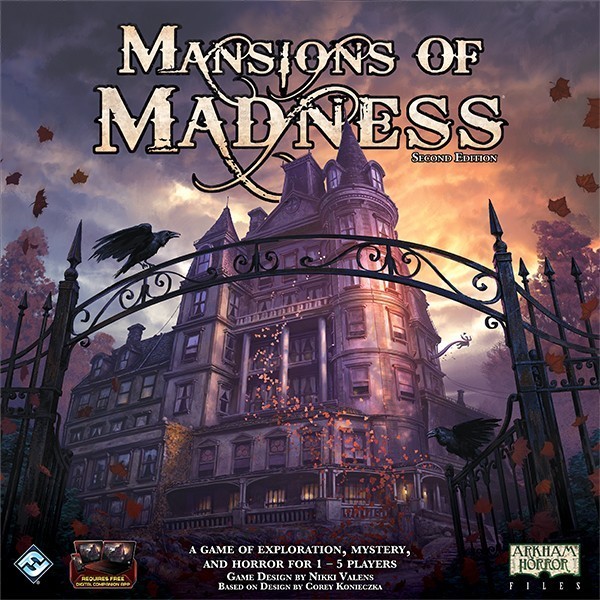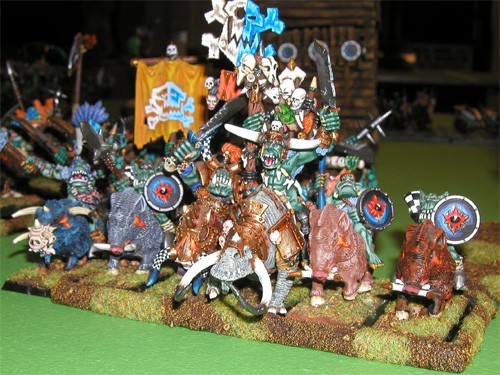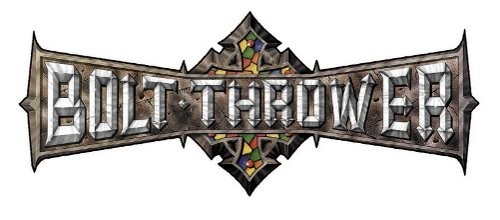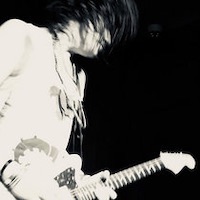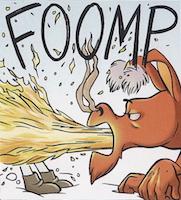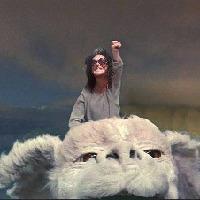Emerging out of the Norfolk city of Norwich – regarded as the most complete medieval city in the United Kingdom – it’s perhaps no surprise that the origins of Themeborne Games were set to percolate in the shadow of towering cathedrals (and mid-morning matters).
The trio of Thomas Pike (Director, Designer), Alex Crispin (Artist, Musician) and James Shelton (co-designer, filmmaker) have carved out an instantly recognisable style within the tabletop indie space that has captured the imagination of a legion of enthusiasts weaned on the dog-eared, yellowing, sense of adventure birthed of Firetop Mountains, Kai Monasteries, and Rogue Traders.
A suitably cult-like devotion to their wares has steadily blossomed over the past five years, as word of mouth and prolific inspiration conspire to edge them ever closer to crossover consciousness. With a trio of expansions and an opulent collectors set for their lauded deep space nightmare ‘Escape the Dark Sector’ almost upon us, we caught them at the culmination of a daydream realised – as the torch is passed to throw flickering shapes upon a whole new generation.

>
With both ‘Escape the Dark Castle’ and ‘Escape the Dark Sector’ you seem to be drawing a lot of influence – both mechanically and aesthetically – from old school, primarily UK-based sources such as the Fighting Fantasy series of gamebooks and perhaps the early Games Workshop house style. I’d imagine a youth in Thatcher’s Britain could be pretty dour and that these formative influences offered an outsized ‘escape’ of their own? Can you tell us a little about your early years, your introduction to fantasy gaming and the effect it had on your life?
Tom – When we were growing up the internet didn’t exist, smartphones didn’t exist, and TV had just a few channels broadcasting programs at specific times. That gave our immediate surroundings a heightened influence over our development compared to kids today, and because we didn’t have immediate access to everything instantly online our imagination had to fill in the blanks a lot more.
As a result, when you got hold of something which really spoke to you, which offered escapism, you would pore over it obsessively. It meant those things had a longer lifespan, and you naturally had a willingness to give them a greater attention span than we do today – whether that was a gamebook, a wargame codex, or an 8-bit microcomputer game on cassette which took 10 minutes to load.
Things required patience to access and imagination to enjoy, which made them all seem so much bigger and more mysterious. Where were these insane images of the Warhammer 40k universe coming from? What is going to happen on the next page of this Fighting Fantasy book? You had no way to answer these questions, so all this stuff held a very real, non-ironic appeal and excitement – that’s a rare feeling these days.
When you spend that much time with these things it stays with you, and in our case it has come pouring out all these years later when we finally got the chance to create our own stuff. And there’s plenty more where that came from.

‘Escape the Dark Castle’ was your first release as Themeborne but are there any other game-related projects you had worked on before? How did these inform your approach when creating the game?
Tom – In 2005 I took an administrative job at a board game distributor which ended up lasting for a decade. Working with just about every publisher to help ship their games around the UK gave me these little glimpses into their worlds and planted a seed – I wanted to be ‘one of those games company guys’, the ones who get to actually make all this cool stuff in the first place. I also gained an encyclopaedic knowledge of every game released in those 10 years, what succeeded and what failed.
I left that job to pursue some unknown creative path for myself. I wasn’t sure exactly what it would be at the time, and I didn’t think of starting my own company initially, but writing was something I suspected I had a bit of talent in so I started out just doing little writing jobs for games companies I already had contact details for – short fiction, world building, rule books, reviews, whatever I could get. It was nothing which directly informed what we do now, but in the background we had been working on this little game of our own. In 2016 I finally took the plunge and founded Themeborne to give that game a chance, and a year later I dropped everything else to focus on it.
Both of your titles embrace a ‘rules light but heavy atmosphere’ style that is indeed reflected in the company name. This is an approach that has been mirrored somewhat in the rise of the indie and OSR movement for tabletop roleplaying games. Did you draw much influence from that realm? I’d imagine there’s a fair bit of cross-pollination at Themeborne HQ between the boardgame and TTRPG worlds.
Tom – To be honest, not really. Our stuff came from a general sense that there wasn’t actually anything else out there we liked – and we looked! We found light games, but they too often seemed to go with a comedic or whacky vibe. We found atmospheric games, but they were too often cluttered. The initial idea was to get across all of this great atmosphere from the old days with ‘as little game as possible’ to get in the way. At that time, no-one else was doing it. Now of course it’s quite trendy.

One of the most striking elements of the games are obviously the artwork of Alex Crispin which was a huge boon to fans of old school black and white line art. Alex can you tell us a little about your influences artistically and how you go about conjuring up the denizens of the ‘Escape’ universe?
Alex – For many people it may come as no surprise to learn that the influences for the Escape the Dark series absolutely hark back to the earlier days of Games Workshop and RPG gaming books. Hours spent youthfully leafing through any Fighting Fantasy titles eager to be simultaneously creeped out and awed by the amazing and often ‘wonky’ images inside. Alongside that were the larger scale, often epic illustrations that could be found in White Dwarf of GW rulebooks that have stuck in my mind to this day, so it was an instinctive no brainer to try to capture some of that atmosphere for this series.
You must have been thrilled by the response to your debut game Escape the Dark Castle and its expansions. When you were sitting down to formulate its sequel and expansions what were the main things you wanted to achieve in building upon the success of its forebear?
Tom – We were delighted with the initial response to Castle, and then the expansion campaign the following year totally blew our minds. We had always envisioned it as a series, and after the fantasy opener the second game was always going to be Sci-Fi because that’s our other big passion.
We wanted to use the same core engine, but to avoid a simple reskin at all costs. It all came very naturally in the end. While the brutal medieval setting of Castle, with its simple everyday prisoners demanded a brutally simple set of rules, it seemed thematically suitable to add a little more complexity for Sector. You can’t do a Sci Fi game without laser guns, cybernetics and so on, and adding those demands a new set of player choices. Adding all that to the core engine really took it to a new level, while still remaining true to its ‘uncluttered’ origins.
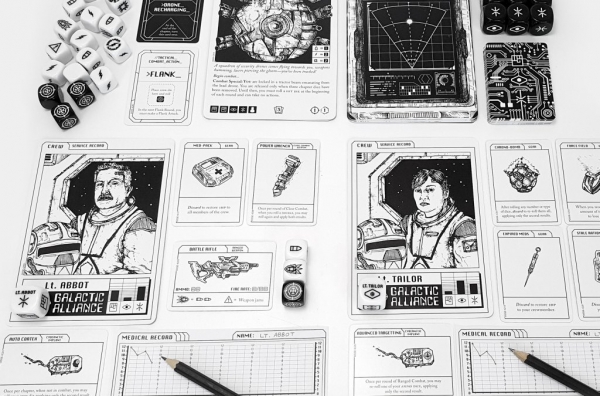
One of the interesting elements to your approach is the multi-media aspect and a focus on the tactile experience delivered by the analogue format. The inclusion of cassette/vinyl soundtracks, the death books, big chunky dice and some rather opulent collector’s components – is this an intentional riposte to an increasingly ephemeral digital environment for media or do you just like holding nice things?
Tom – All of this tactile and multimedia stuff contributes to a more immersive experience for the players and that’s what we’re all about. Production quality was a high priority for us right from the very start and it is a big part of achieving that sense of immersion. For instance, we chose unusually large cards to better generate atmosphere from the artwork. The same goes for the large, heavy dice – people just enjoy rolling them more. Equally, adding the short fiction and soundtracks to complete the experience was very natural because those kinds of little details make a big difference to us.
Could you elaborate a little on the creation of the soundtracks? Are they (and the artwork) informed first by the prose and content or is a more free-form affair? What’s the compositional process?
Alex – The soundtracks were created somewhat intuitively initially in terms of attaining the ‘correct’ atmosphere – not too shiny and yet not too dirgey. We knew from the outset that we wanted certain gaming moments to be covered throughout, be it a boss battle or something more environment appropriate for a certain stage of the game you might be at when listening. In turn we also tried to time the whole experience to match a game from start to finish, with the caveat that it is an extremely variable experience! Recording wise, for both soundtracks there was certainly indulgence with regards to foley and trying to get some interesting sounds via unconventional means.

With the EtDS expansions almost upon us – what can you reveal about the fresh hell of deep space abominations you have in store for players?
Tom – We’re really excited about them, some of our best stuff is in those expansions. Twisted Tech is all about rotting bio-freaks and cybernetics gone wrong, while introducing new tactical drones and special weapons like the Flame Thrower. Mutant Syndrome adds a mechanic which allows your crewmember’s limbs to mutate during the mission, and this can sometimes even be positive – for instance an arm mutation might give you additional strength. And lastly, Quantum Rift adds time travel to the game, so one minute you’ll be blasting your way through the detention level and the next you’ll tumble through time and space, emerging face to face with perils of the distant past – like Dinosaurs, Samurai, and even returning to the Castle!
What’s next for Themeborne games? More ‘Escape…’ titles? Personally I think there’s a lot of potential in an “Escape the Dark Sea”.
Tom – We just celebrated our 5th ‘birthday’ as a company, and last month Escape the Dark Sector won ‘Best New Dice Game’ at the UK Games Expo Awards 2021. Those are two huge achievements for us. We’ve gone from nothing to a small, award-winning studio, and I’m finally ‘one of those games company guys’ I set out to be.
We’ve done nothing but flat-out hard work from day one so we’re finally taking a break, a moment to stop and appreciate it all before deciding what to do next. Creatively, it’s time for something new, that much we can say for sure. We’re putting the Escape the Dark series on ‘pause’ so we are free to explore new avenues. I’m sure you can imagine how many cool ideas we’ve had over the years, so we’re going to take some time to figure out which project we should do next – fully aware it might immediately swallow us for the next five years! Whatever it is, it’s going to be fun.

Embrace your inner escapologist here.
Or check out my reviews of Escape the Dark Castle and Escape the Dark Sector.
 Games
Games How to resolve AdBlock issue?
How to resolve AdBlock issue? 